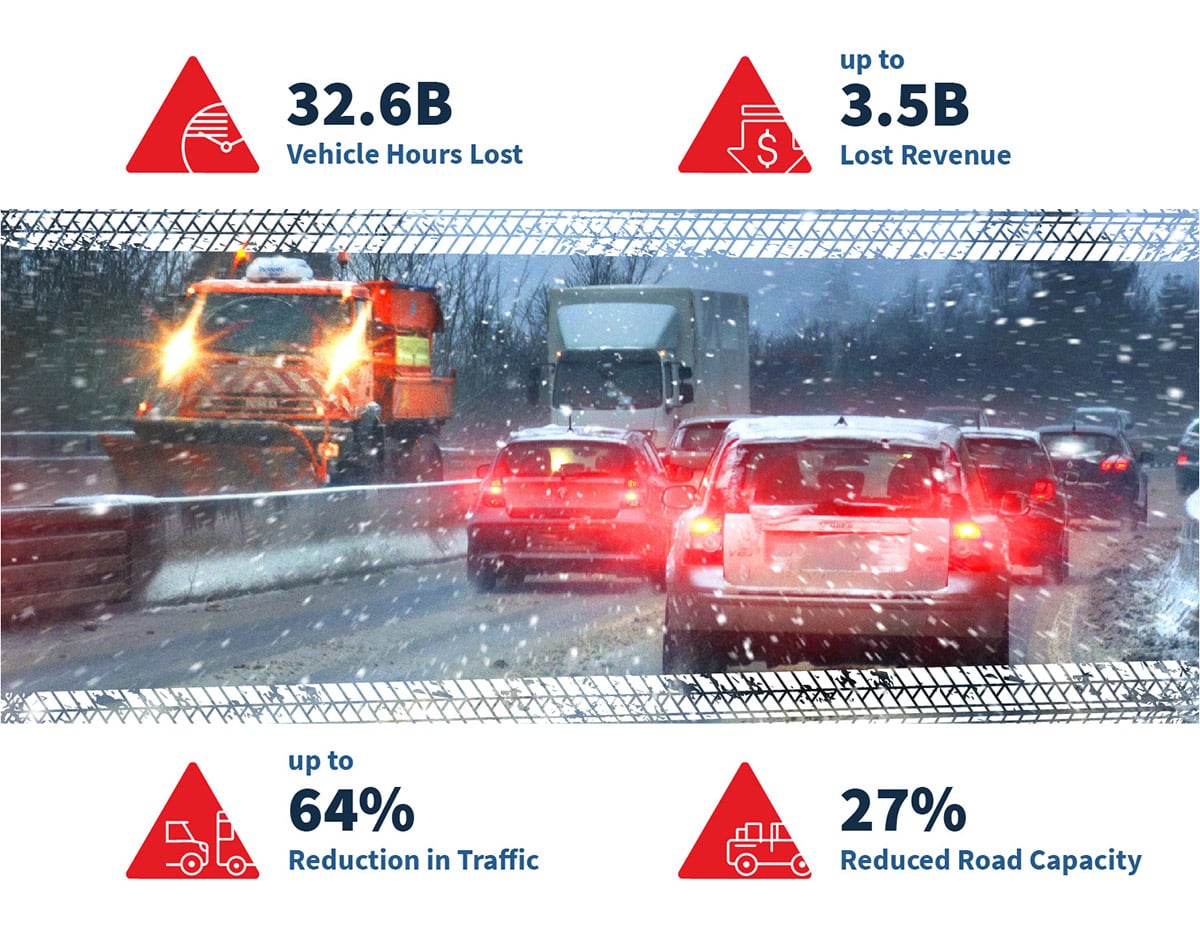
Fleets Can Avoid the Impacts of Snowmageddon With Predictive Weather Tools
Winter: These are the times that try drivers’ souls.
Icy roads, massive snowfalls, and fog warnings wreak havoc on schedules and create delays or even graver dangers. Wintery weather also creates daunting challenges for fleet managers and the customers they serve. Having and utilizing tools to better predict and plan around serious winter weather hazards is critical to provide fleets with better driver safety, increased productivity, and more agile customer service.
While supply chain challenges – gridlocked ports, lined up container ships, and delayed shipments – have received the most attention recently, the fact is bad weather can lead to just as many delays and bottlenecks, impacting fleet operations and their customers’ bottom line. In just the past several weeks, we’ve seen a dizzying array of severe weather events across the country and the toll they inflict.
In Colorado, wind gusts topping 100 mph toppled trees, overturned semi-trucks and caused power outages affecting over 100,000 residents. In Kentucky, unprecedented winter tornadoes caused over 50 fatalities and blocked roads across the state, and a sudden winter storm in Virginia shut down IH-95 for over 30 hours, gridlocking a vital roadway. Severe weather events such as these can cause millions of dollars in property damage, wreck shipping and delivery schedules, and lead to debilitating injuries due to accidents and traffic jams.
According to the Federal Highway Administration, severe weather significantly increases operating and maintenance costs for commercial vehicle fleets. In total, commercial fleets lose an estimated 32.6 billion vehicle hours due to weather-related congestion, causing between $2.2 to $3.5 billion in losses each year. While rain — the most prevalent weather hazard — is the leading cause of lost time and revenue, severe winter conditions are also a major factor. Snowfall on roadways can reduce traffic flow from between 5% to 64% of normal speed and reduce road capacity by as much as 27%, delaying deliveries and putting drivers at risk. Predicting winter pitfalls can help fleet services avoid an avalanche of lost time and revenue.

Forewarned is forearmed.
Predictive weather tools are simple to use and can help fleet dispatchers protect their drivers and their customers. Utilizing current fleet management solutions such as GPS tracking, smart cameras, and mapping tools, a predictive weather overlay allows fleet managers to pinpoint vehicle location, accurately chart the vehicle’s course, and provide real-time updates to ensure drivers better, safer routes. Predictive weather overlays show up to 12 hours of predictive data directly onto a fleet manager’s current map, allowing them to make quicker, more informed vehicle decisions. This type of feature can also increase productivity by prioritizing routes to avoid problem areas or to reassign jobs altogether.
Predictive weather tools can improve customer service by keeping clients in the loop regarding potential delays. For example, you’ve scheduled a large delivery of lumber and building supplies to a home contractor for tomorrow, but a winter storm threatens closure of a vital roadway along the route. With a predictive weather feature, you can look ahead to design a safer, clearer route, ensuring on-time delivery. If all roads will be affected, you can alert your contractor that the lumber shipment will be delayed, allowing them to reassign priorities or avoid paying to have a crew on-site when they cannot work.
Interested in finding out more? See how GPS Insight can help you improve safety, efficiency and productivity, and customer service during severe weather.





